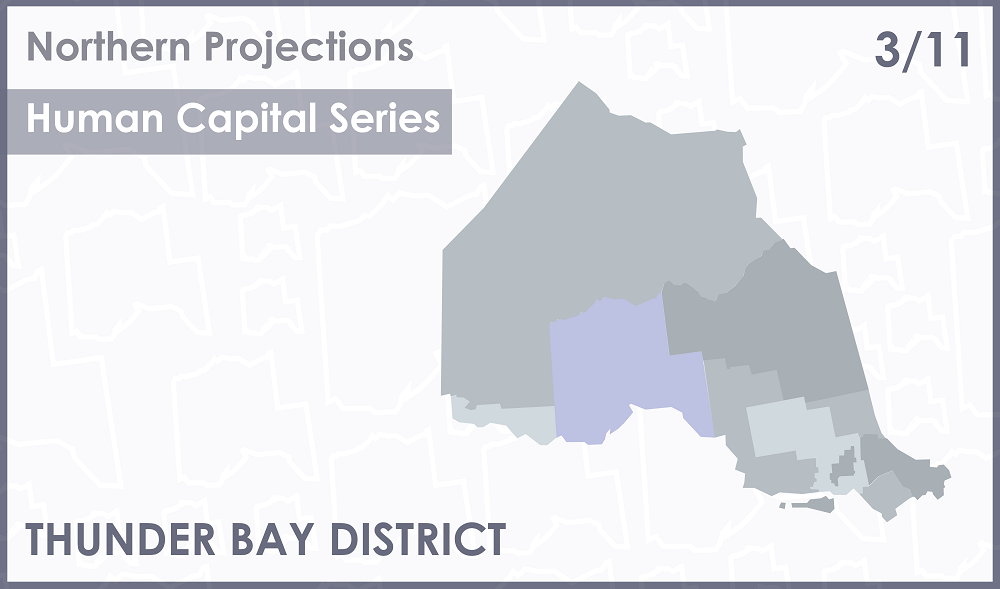Thunder Bay District

Northern Projections: Human Capital Series - Thunder Bay District
September 15, 2016 | James Cuddy & Bakhtiar Moazzami
The third report of the joint effort between Northern Policy Institute, and the Northern Ontario Workforce Planning Boards; Northern Projections: Human Capital Series, focuses on the Thunder Bay District, highlighting the contrasts that exist between urban and rural population and workforce trends.
The report offers three key recommendations to promote the long-term sustainability of the district:
1. Market the city of Thunder Bay as the economic engine of the Northwest - While the population in Thunder Bay district has declined, the urban population has increased, reflecting the movements of people from rural to urban areas. Additionally, within the Thunder Bay Census Metropolitan Area, the skill level among the Indigenous population is above provincial levels for both men and women. The urban core of Thunder Bay district has shown some promising signs of growth that should be marketed outside of the region.
2. Continue to foster female participation in the labour force - Labour force participation and employment rates declined among men, but rose among women from 2001 to 2011.
3. Make Indigenous education the number one priority in the region - The Indigenous population is expected to grow by nearly 42 percent from 2013 to 2041. The population of working age Indigenous peoples will grow by 38 percent, increasing their share of the labour force from 11 percent in 2013 to 18 percent in 2041. There is a strong evidence showing that higher skill levels increase the likelihood of participation in the workforce and reduce unemployment rates in Thunder Bay district.
Continue Reading → Read the Release
Do not miss out on a Research Report. Subscribe to our updates here!
Media Coverage
- September 17, 2016 - The Chronicle Journal - Thunder Bay ‘engine' amid regional change
- September 16, 2016 - Tbnewswatch.com - Fifteen times more immigrants needed to replace aging workforce
Related Research
- It's What You Know (And Where You Can Go): Human Capital and Agglomeration Effects on Demographic Trends in Northern Ontario
- Settling Down in the Northwest: Stability and Opportunity in the Northwestern Ontario Labour Market
- Show me the Money: Some Positive Income Trends in Northern Ontario
- Northern Projections: Human Capital Series - Cochrane District
